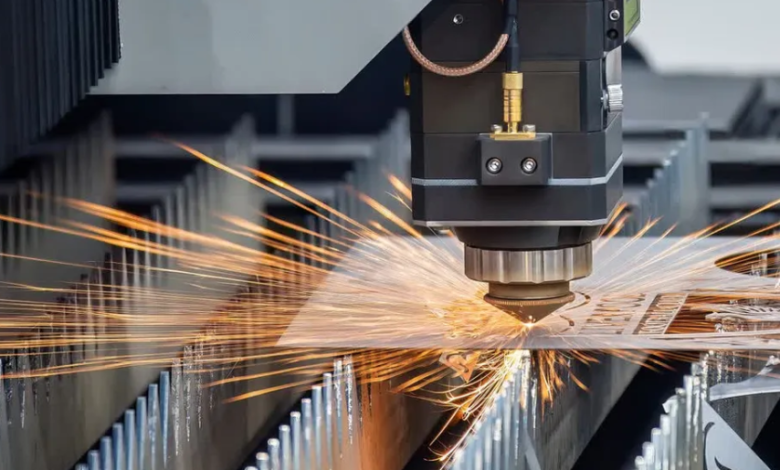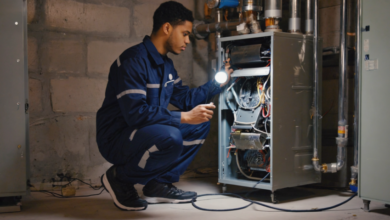Innovations Enhancing Sheet Metal Accuracy

Introduction
The metal fabrication industry continues to evolve with advanced technologies that ensure precision, speed, and consistency in every process. Among the most essential tools that drive these improvements are press brake backgauges These components are designed to ensure that each bend in a metal sheet is accurate, repeatable, and efficient. As manufacturers strive for higher productivity and quality, understanding how these systems function and their role in modern production becomes crucial.
The Purpose and Role of Backgauges
In a press brake setup, backgauges are mechanisms used to position sheet metal accurately before it is bent. They serve as reference points that determine the distance between the sheet edge and the bending line. The operator sets the required dimensions in the control unit, and the backgauge automatically moves into place to achieve precise alignment.
By automating the positioning process, press brake backgauges eliminate manual measurement errors and ensure every piece produced maintains uniform dimensions. This not only enhances quality but also increases output in high-volume production environments.
See also: Strengthening Digital Growth with Advanced Marketing Techniques
Components of a Modern Backgauge System
Modern press brake backgauges are built with precision engineering and advanced control systems. The main components include:
1. Gauge Fingers
These are adjustable metal stops that hold the sheet metal at a specific point. They make contact with the sheet edge, ensuring consistent positioning for every bend.
2. Drive Mechanism
This component controls the movement of the gauge fingers. Depending on the machine, the drive can be mechanical, hydraulic, or servo-electric. Servo systems are especially popular due to their fast and accurate movements.
3. Control Panel
Operators use the control panel to set up and adjust the position of the backgauge. In CNC-equipped machines, these controls can store multiple bend programs and automatically switch between them.
4. Sensors and Linear Scales
Sensors and linear scales maintain precision by detecting even the smallest positioning deviations. These elements help keep tolerance levels within microns, which is essential for industries requiring exact accuracy.
Types of Press Brake Backgauges
Different operations and production requirements call for various types of backgauge systems. Below are the most common types:
1. Manual Backgauge
The manual type is operated using hand cranks or mechanical adjustments. It is ideal for small workshops or simple bending tasks where automation is unnecessary.
2. Motorized Backgauge
Motorized systems use electric motors for movement. They offer better control and quicker adjustments compared to manual models, providing moderate automation at a lower cost.
3. CNC Backgauge
CNC-controlled backgauges represent the most advanced type, capable of storing multiple setups and performing automatic adjustments during production. They integrate seamlessly with other digital tools, enabling complex bend sequences and higher productivity.
Benefits of Using Press Brake Backgauges
Implementing advanced backgauge systems in press brakes offers numerous benefits that improve both production quality and efficiency.
1. Enhanced Accuracy
Automated backgauges ensure precise positioning of the sheet, resulting in consistent bend angles and dimensions. This precision is essential in industries where tight tolerances are critical.
2. Increased Productivity
By reducing manual setup times and allowing quick adjustments, backgauges enable operators to produce more parts in less time without compromising quality.
3. Consistent Output
The use of backgauges guarantees that every part matches the previous one, maintaining uniformity across production batches.
4. Cost Efficiency
Accurate bends reduce material waste, saving both raw materials and operational costs. The reduced need for rework also improves overall profitability.
5. Improved Operator Safety
Automation means less manual interference near the bending zone, which lowers the risk of accidents and enhances workplace safety.
Industrial Applications
Press brake backgauges are vital in industries that require precise sheet metal bending. Common applications include:
- Automotive manufacturing: Creating components like body panels and structural parts.
- Aerospace industry: Producing lightweight, high-precision parts for aircraft.
- Electronics: Forming enclosures and brackets for electronic devices.
- Construction: Fabricating beams, supports, and custom panels.
- Appliance manufacturing: Shaping outer casings and internal components.
These industries depend on accuracy and repeatability, which makes backgauge systems indispensable.
Maintenance Practices for Longevity
Regular maintenance ensures that backgauges operate smoothly and remain accurate over time. Dust, metal debris, and oil residues can affect performance, so frequent cleaning is essential. Operators should:
- Clean gauge fingers and guide rails regularly.
- Check for wear on moving parts.
- Inspect servo motors and control cables.
- Calibrate the system periodically to ensure continued precision.
Preventive maintenance not only extends the lifespan of the equipment but also minimizes downtime during production.
The Role of CNC Technology
CNC technology has revolutionized the use of press brake backgauges. It allows operators to program multiple bends and execute complex shapes automatically. Modern CNC controls can store hundreds of programs and recall them instantly, which is ideal for mass production.
These systems also integrate with CAD/CAM software, allowing for digital-to-machine accuracy. This integration minimizes human intervention, speeds up setup times, and enhances precision across all bending operations.
Future Developments and Smart Manufacturing
The future of press brake backgauges lies in automation and intelligent control. With Industry 4.0 gaining traction, manufacturers are incorporating IoT, AI, and data analytics to further enhance system performance. Future trends include:
- AI-based positioning systems: Learning optimal bend sequences through predictive algorithms.
- Smart sensors: Real-time monitoring for predictive maintenance.
- Touchscreen interfaces: Simplifying control and setup procedures.
- Full automation: Integration with robotic arms for unmanned bending operations.
These innovations will help manufacturers achieve faster production rates, higher accuracy, and better resource efficiency.
Conclusion
Press brake backgauges are essential tools in modern metal fabrication. Their ability to position sheets with exceptional accuracy ensures consistent, high-quality bending operations across various industries. As automation and digital technologies continue to evolve, backgauges are becoming even more advanced, integrating smart controls and adaptive systems that improve performance and reliability.
For any metalworking facility aiming to achieve precision and efficiency, investing in high-quality press brake backgauges is a strategic decision that guarantees long-term productivity and quality improvement.




